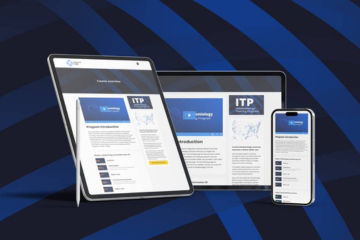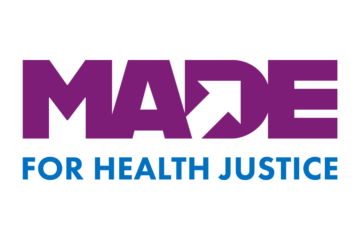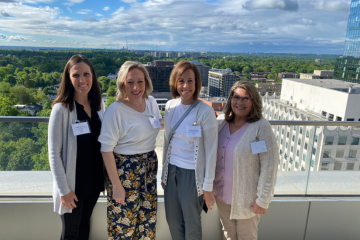 As U.S. communities grow increasingly diverse in racial and ethnic representation, their linguistic diversity is also expanding. Public health agencies committed to principles of diversity, equity, and inclusion (DEI) in their organizational missions need to also consider how they are supporting language justice as part of their DEI goals.
As U.S. communities grow increasingly diverse in racial and ethnic representation, their linguistic diversity is also expanding. Public health agencies committed to principles of diversity, equity, and inclusion (DEI) in their organizational missions need to also consider how they are supporting language justice as part of their DEI goals.
Language Access Versus Language Justice
Both language access and language justice are necessary for inclusive, multilingual environments, but they serve distinct purposes. Language access encompasses the laws and policies that guarantee people access to written, verbal, or visual materials or services in their preferred languages. Language justice goes beyond access, representing “an evolving framework based on the notion of respecting every individual’s fundamental language rights—to be able to communicate, understand, and be understood in the language in which they prefer and feel most articulate and powerful.”1
Language justice is integral to public health agencies, which are charged with communicating information regarding people’s health, safety, and well-being. Community members not only need to understand the functions and responsibilities of their local health department but also be able to fully engage in the decisions affecting their health and lives. When leading with language justice, public health agencies break down oppressive barriers to achieving health equity, viewing their community members as equal partners rather than passive recipients.
Any initiative with a communications aspect can be viewed through a lens of language justice for a more equitable and inclusive experience. For example, hosting an informational webinar rooted in language justice involves more effort than hiring an interpreter. Event organizers would need to translate all relevant materials, using community-friendly vocabulary without jargon or difficult terminology. Hosting an event with a language justice lens would also require that organizers make sure a range of voices and perspectives were present and that all attendees were encouraged to communicate in their preferred languages. After the event, attendees would be provided multilingual options for follow-up via e-mail, phone, or Web site submission form.
Setting the Foundation for Language Justice
Moving toward language justice in health departments depends on the collaboration of staff at all levels and the community members they serve, with the support of language service providers. Language justice is a team sport—although language service providers are essential to creating effective multilingual spaces, they do not hold the sole responsibility.
Organizations pursuing more diverse and inclusive communications practices need to embrace language justice within their organizations first so as not to rely on interpreters or translators to do the heavy lifting of language justice transformation.
Securing buy-in from management is critical to effecting change, as power dynamics may prevent more junior employees from advocating for language justice within their organizations. When leadership champions language justice as part of the organizational culture, staff at all levels feel supported in creating a multilingual workplace.
Management can begin with an assessment of language access capabilities across the organization. Determining a baseline for language access will help shape recommendations for expanding language justice. Staff can then collaborate on a strategic plan for supporting language justice that outlines short- and long-term goals. Such milestones could include translating the health department Web site, setting up a multilingual hotline, or hiring a language service provider on retainer.
As employees consistently refine their approach to language justice, their best practices can be collected in a reference guide for questions such as what documents can be translated in-house with trained bilingual staff versus what needs to be contracted out to a professional.
Planning and Evaluating With Community Members
Gathering insights from community members at the onset of a program, initiative, or policy will help ensure that people will want to use the resources their health department offers. Depending on community preferences, listening sessions, focus groups, or surveys can all provide useful input from community partners about what they believe to be barriers to and opportunities for expanding language justice.
Besides determining the logistics of when, where, and how to engage with community partners, public health agencies are also tasked with ensuring that people understand their role in language justice. Community members may need guidance on working with interpreters, for example. They also need assurance from their public health agencies that they have the right to communicate in the languages they want to use and that they can speak up if the interpretation provided is unclear or inaccurate.
Equally as important as establishing the foundation for language justice is continually evaluating progress. Following programs or workshops, event organizers should invite participants to evaluate their experience and adjust their language justice efforts based on this feedback.
Using Care With Technology
Tools such as machine translation are no replacement for skilled language service providers. Qualified interpreters or translators should advise on the use of any technology with a language component, including video- and audioconferencing platforms. That way, both public health agency staff and community members will understand how to use these technologies and can take advantage of their various translation and interpretation features.
Preparing for technological mishaps with backup interpretation and translation on multiple platforms is another consideration. For example, a phone conference line can be used as a complement to a webinar if the closed captioning feature is unavailable. Regularly downloading the latest versions of language technologies and keeping an updated credit card on file for subscriptions will also help curb interruptions.
Striving Toward Justice
Public health agencies that have taken steps toward language access have an opportunity to build deeper, more meaningful relationships within their organizations and alongside their community partners by embracing language justice. By leading with language justice, public health agencies demonstrate a commitment to DEI that enables them to carry out their work more consciously and effectively.
Promoting language justice also shows respect for people who have long been ignored because of institutional barriers and the constraints of adhering to a dominant language. When people are enabled to speak, write, or sign in the languages in which they are most confident, they can bring their full selves to conversations about the issues that matter most to them.
Reference
- Payton C, Lee J, Noguez Mercado AP, Uliasz A. Language justice during COVID-19 [Web log]. https://www.americanbar.org/groups/young_lawyers/projects/disaster-legal-services/language-justice-during-covid-19/. Accessed March 29, 2022.
This column first appeared in the July/August 2022 issue of the Journal of Public Health Management & Practice. See the final authenticated version.




